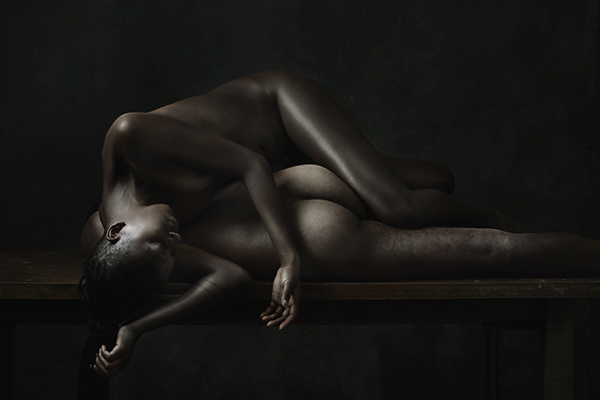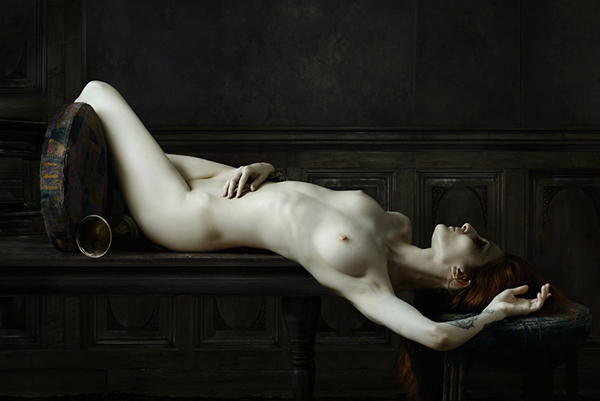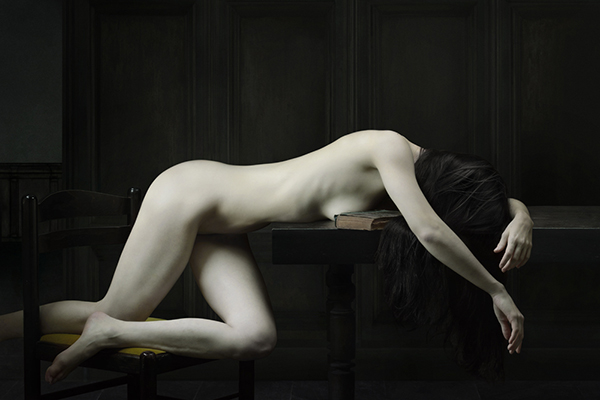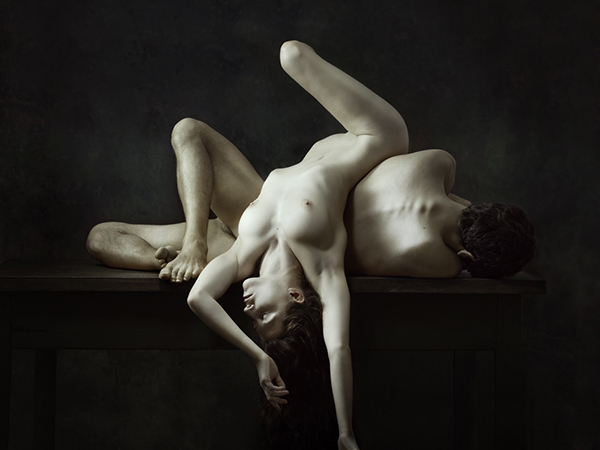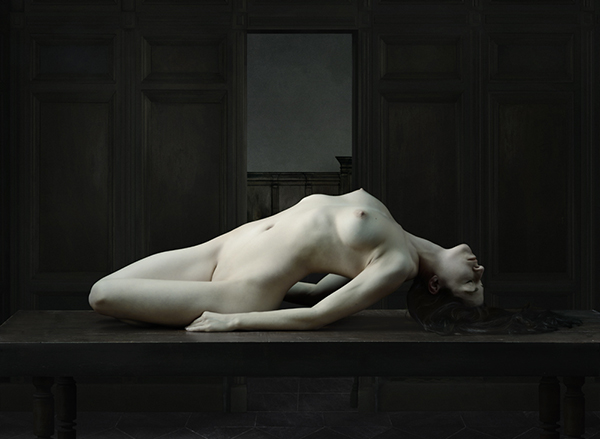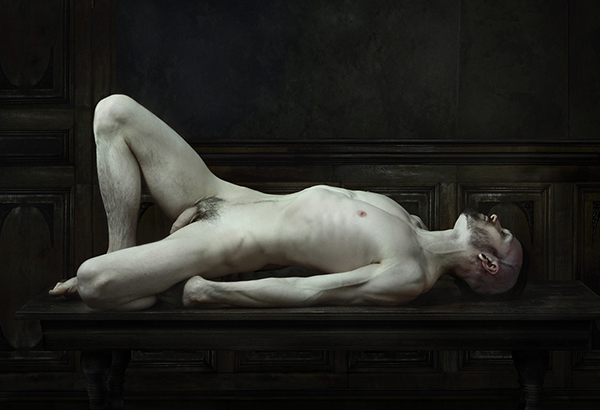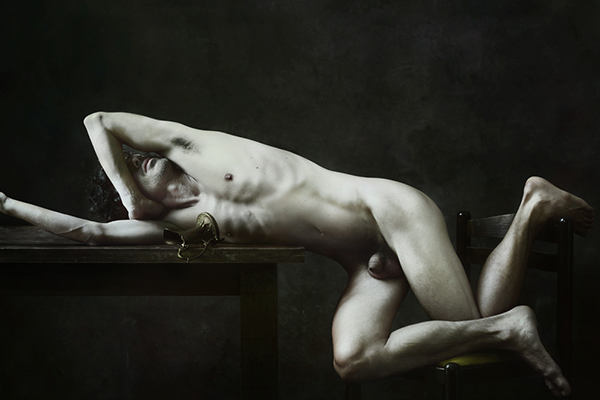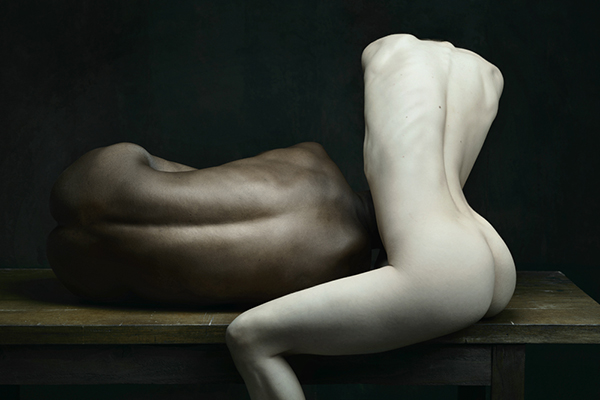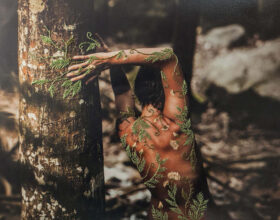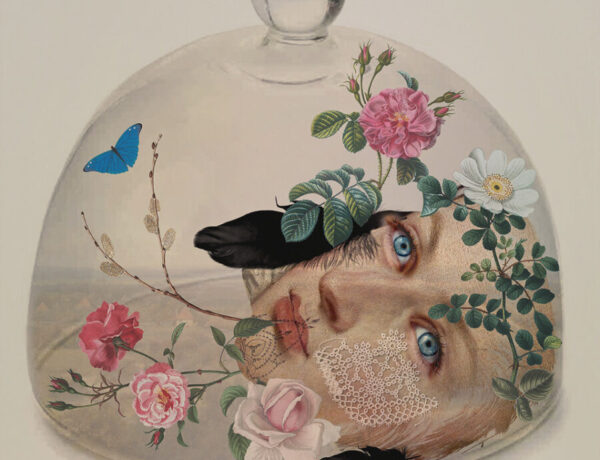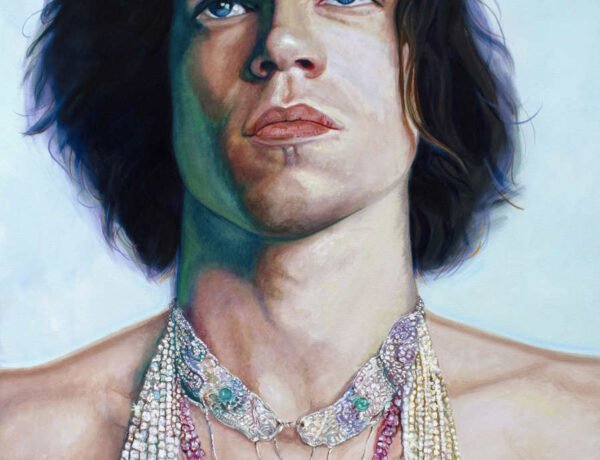“Still-life was the perfect fit for a post-war atmosphere. Beyond symbolizing the ephemeral nature of life, it relates to the notion of transitioning. I wanted to set bodies into an unfamiliar environment and infuse them with a feeling of disorientation, as if recovering from trauma or stuck in a vertigo,” says Olivier Valsecchi about his new series of work, Drifting. According to the French photographer, it’s a conversation between his previous I am Dust and Klecksography. While the two latter projects depict subjects that are definitely active, the delicately placed bodies in Drifting might as well be dead if one didn’t know better.
It’s exactly this passage — the one that leads from vibrancy to stillness — that makes these brightly lit human skins thrive. When life has left the body, a person’s soul appears gone, yet its facade remains. Therefore, the recently deceased still have a strong presence before they exit the world’s surface, concealed in a tomb to be physically separated from the living by soil. For loved ones it’s hard to grasp that certain habits — such as talking, moving or blushing — are no longer accessible to passed ones. It’s like the known friend has cold-heartedly dropped out of his human suit and the only thing remaining is confusion.
Valsecchi’s images appear as though they are holding on to the last bit of ‘human ability’ that is left, if any. The bodies form flowing shapes, possibly alluding to the ever-continuing cycle of life, yet the bodies themselves look morbid. Like arranging toy soldiers to form a hair-raising action scene, he’s making life from death if you will. Or, maybe more adequately, Drifting exemplifies the space where life and death indulge in each other, rendering it unclear which one of them is on top.
Pointing to the still-life painting art form from Flanders, Valsecchi calls his creation ‘Flesh Vanitas’. The genre’s occupation with the meaninglessness of earthly life and transient nature of pursuits such as pleasure, is fittingly appropriated. As its name refers to futility — which is the old meaning of ‘vanity’ — artists would depict skulls, rotten fruit or hourglasses to remind viewers that nothing lasts forever. Drifting upholds the motif by focusing on the pivotal moment when flourishing stops and decay starts, creating an arresting melting point of opposing, yet inevitably connected, realms.
Follow Olivier Valsecchi on Facebook to stay updated about further projects.




